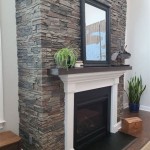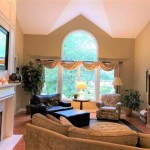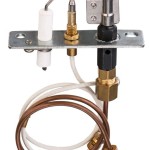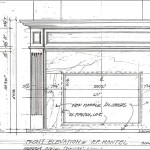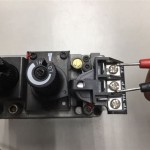Converting a Gas Fireplace to a Wood Burner: A Comprehensive Guide
The question of converting a gas fireplace to a wood burner is a common one for homeowners seeking the ambiance and heating efficiency of a traditional wood-burning fire. While the allure of crackling logs and a natural flame is undeniable, the feasibility and legality of such a conversion are complex and require careful consideration. This article will provide a detailed overview of the factors involved in this process, covering aspects from safety regulations and building codes to installation procedures and potential challenges.
A gas fireplace is designed and engineered for the controlled combustion of natural gas or propane. Its components, including the gas line, burner, venting system, and firebox, are specifically tailored for this fuel. Conversely, a wood-burning fireplace is designed to withstand the high temperatures and combustion byproducts of burning wood. This difference in design necessitates a thorough understanding of the implications before considering a conversion.
Attempting to burn wood in a fireplace designed for gas can lead to serious safety hazards, including carbon monoxide poisoning, chimney fires, and structural damage. The existing gas venting system is typically not designed to handle the soot, creosote, and high temperatures produced by wood combustion. Moreover, the firebox itself may not be constructed to withstand the intense heat generated by a wood fire.
Key Point 1: Assessing Feasibility and Legality
Before embarking on a conversion project, the initial step involves a thorough assessment of feasibility and legality. This includes consulting local building codes and regulations, which vary significantly from municipality to municipality. Many jurisdictions have strict restrictions on wood-burning fireplaces due to concerns about air quality and environmental impact. Some areas may prohibit the installation of new wood-burning fireplaces altogether, while others may have specific requirements regarding emissions levels and appliance certification.
Homeowners should contact their local building department to determine the applicable codes and obtain any necessary permits. This often involves submitting detailed plans and specifications for the proposed conversion, demonstrating compliance with all relevant regulations. The building department may also require inspections at various stages of the project to ensure that the work is being performed according to code.
Beyond local regulations, it is also crucial to consider the existing fireplace structure. A qualified professional, such as a certified chimney sweep or a licensed contractor specializing in fireplaces, should inspect the existing system to determine its suitability for conversion. This inspection should include a thorough assessment of the chimney, firebox, and surrounding structural elements. Factors to consider include the chimney's height, diameter, and condition, as well as the firebox's dimensions and construction materials.
If the existing fireplace is deemed unsuitable for conversion, significant structural modifications may be required. This could involve widening the firebox, reinforcing the chimney, or even rebuilding the entire fireplace. Such modifications can be costly and time-consuming, and they may not be feasible in all cases. It is essential to obtain multiple quotes from qualified contractors and carefully evaluate the costs and benefits of each option before proceeding.
Key Point 2: Understanding the Conversion Process
Assuming that the conversion is feasible and legal, the next step is to understand the specific steps involved in the process. This typically involves removing the existing gas fireplace insert or appliance and preparing the fireplace for wood burning. The exact procedures will vary depending on the specific type of gas fireplace and the desired configuration of the wood-burning fireplace.
One of the first tasks is to disconnect and cap off the gas line. This should be done by a qualified gas technician to ensure that the gas supply is safely shut off and there are no leaks. The gas line should be permanently capped to prevent accidental gas flow in the future.
Next, the existing gas fireplace insert or appliance must be removed. This typically involves disconnecting the gas flue and carefully removing the unit from the firebox. The firebox may then need to be cleaned and prepared for wood burning. This could involve removing any remaining gas components, patching any cracks or holes, and installing a new firebrick lining if necessary. Firebrick is a heat-resistant material that protects the fireplace walls from the intense heat of a wood fire.
The chimney is a critical component of any wood-burning fireplace. It must be properly sized and constructed to safely vent the smoke and combustion byproducts. If the existing chimney is not suitable for wood burning, it may need to be relined or replaced. Chimney liners are typically made of stainless steel and are designed to withstand the high temperatures and corrosive elements produced by wood combustion.
In some cases, it may be necessary to install a new chimney altogether. This is a complex and expensive undertaking that requires careful planning and execution. The new chimney must be properly sized and located to ensure adequate draft and prevent smoke from entering the house. It is also important to consider the aesthetic impact of the new chimney on the home's exterior.
Key Point 3: Safety Considerations and Long-Term Maintenance
Safety is paramount when dealing with any type of fireplace, and wood-burning fireplaces require particular attention to safety precautions. Carbon monoxide poisoning is a serious risk associated with wood-burning fireplaces. Carbon monoxide is a colorless, odorless gas that can be produced by incomplete combustion of wood. It is essential to install carbon monoxide detectors on every level of the home, particularly near sleeping areas. These detectors should be tested regularly to ensure that they are functioning properly.
Chimney fires are another significant risk associated with wood-burning fireplaces. Chimney fires occur when creosote, a flammable substance that accumulates in the chimney, ignites. Regular chimney cleaning is essential to prevent creosote buildup and reduce the risk of chimney fires. The Chimney Safety Institute of America (CSIA) recommends that chimneys be inspected and cleaned annually by a certified chimney sweep.
Proper ventilation is also crucial for safe and efficient wood burning. The fireplace should have a damper that can be opened and closed to control the airflow. When starting a fire, the damper should be fully open to allow for maximum airflow. As the fire burns down, the damper can be gradually closed to conserve heat. However, it is important to ensure that the damper is not closed completely, as this could lead to carbon monoxide buildup.
The type of wood that is burned also affects safety and efficiency. Only seasoned hardwood should be burned in a fireplace. Seasoned wood is wood that has been properly dried for at least six months. Burning green or unseasoned wood can produce excessive smoke and creosote, increasing the risk of chimney fires. Hardwoods, such as oak, maple, and ash, burn hotter and longer than softwoods, such as pine and fir.
Maintaining a wood-burning fireplace requires ongoing attention. Regular inspections and cleanings are essential to ensure that the fireplace and chimney are in good working order. The firebox should be inspected for cracks and damage, and the chimney should be checked for creosote buildup. Any necessary repairs should be made promptly to prevent further damage and ensure safe operation.
In addition to regular maintenance, it is also important to practice safe burning habits. Never leave a fire unattended, and always use a fireplace screen to prevent sparks from escaping. Store firewood away from the house and away from any flammable materials. Dispose of ashes properly, and never use flammable liquids to start a fire.
Converting a gas fireplace to a wood burner is a complex project that requires careful planning, thorough execution, and ongoing maintenance. By understanding the feasibility, legality, and safety considerations involved, homeowners can make informed decisions about whether or not to proceed with this type of conversion.

Want To Convert Gas Wood Fireplace Full Service Chimney
Converting A Wood Burning Fireplace Into Gas Heat Glo

Want To Convert Gas Wood Fireplace Full Service Chimney

Gas To Wood Fireplace Conversion Overland Park Ks Firplace Service

Wood Burner Conversion New Jersey Fireplaces Kjb

Can You Convert A Gas Fireplace To Wood Burning Stove Direct Stoves

Wood Fireplaces Gas Conversion That Counts

Convert From Wood To Gas With A Insert The Kernel Burner

Converting A Fireplace To Wood Burning Stove Chesneys

Wood To Gas Fireplace Conversion In Wisconsin Free Quote Badgerland Waesha
Related Posts



